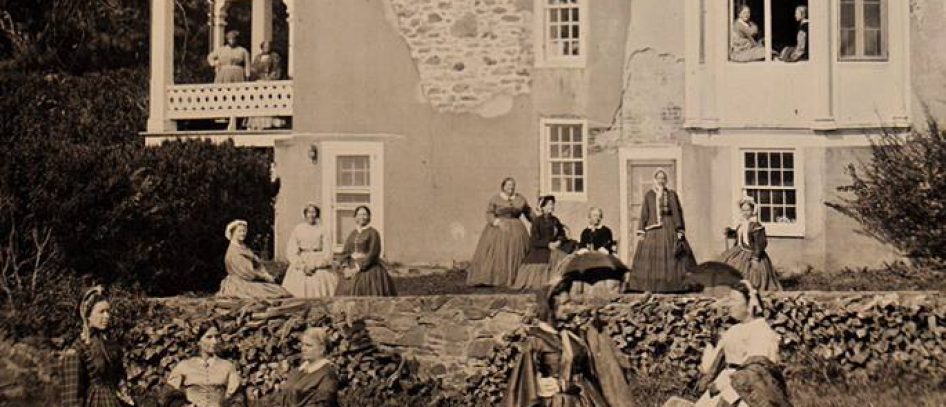Fabric images from Carolann Schmitt’s presentation “It Looks Like…And Feels Like…Understanding Mid-Nineteenth Century Textiles” presented at the 13th Annual Ladies & Gentlemen of the 1860s Conference, March 1-4, 2007. Additional images courtesy of K. Krewer. Additional information is taken from Vicki Betts’ presentation “Clothing for the Working Woman”. All used with permission. None of this information may be reproduced without the permission of the author(s).
Fabric in the 1860s was either made from plant or protein or a combination of the two. The most common fibers during this time were:
- Cotton
- Pina cloth, a semi-transparent fabric using fiber found in pineapple leaves; fashionable as summer dresses, shawls and handkerchiefs
- Silk
- Wool
COLOR AND DESIGN
- Most reproduction cotton prints today were actually made up in wool in the 19th century. Calico referred to a type of cotton cloth, not the print.
- Bright colors possible in calico and wool
- Work dresses usually of darker background color to hide stains
- Both cotton and wool printed or woven designs
- Solid colored wool dresses common, solid colored cotton dresses very uncommon to none
Period designs
- Vermiculate—squiggly lines like worms or coral
- Picotage—tiny dots in various patterns
- Ogee—wavy stripes
- Geometric—small, spaced geometrics, stripes, plaids, foulards, ditsies and dum-dums (last two scattered symbols with no particular meaning), can look almost modern
- Eccentric—bizarre, complicated lines, can also appear modern
- Neats or shirtings—small simple patterns, floral or geometrics, one or two colors set sparsely in a regular pattern on a white ground. Domestic neats were inexpensive.
- Small plaids—printed or woven; wovens reversible; small plaids easier to match
- Windowpane plaids
- Florals—bouquets and nosegays on top of striped pattern; with ribbons; buds on a dotted or vermiculite background; leaves and branches on pale ground; moderate size, uncluttered and space between patterns
- Paisley—adapted from traditional Indian textile patterns, a stylized botanical form, an oval shape with a curl on the end. Large boteh in set and spaced layouts. Buti smaller stylized boteh and found in all-over, small scale patterns.
- Commemorative or conversational prints—expressed political sentiments or honored important events; highlighted objects other than flowers.
- Ombre—gradual shading of color(s), less popular after 1860
- Objects—bugs, anchors, horsehsoes, sewing implements, flags, cannons on white ground
- Trompe l’oeil—patterns printed to look like other textures; basket weaves, ribbons, ruffles, moiré, lace
- Handwoven—even or uneven plaids, usually small repeat, simple or complex, stripes; some interesting weaves with plied threads
Period color combinations
- Green & brown
- Raspberry & aqua
- Blue and tan
- Orangey red & black or light purple or light blue
- Pink & brown
- Purple & brown
- Khaki with red & green
- Orange & navy
- Yellow & navy
- Peach not widely used but sometimes with mint or aqua green
